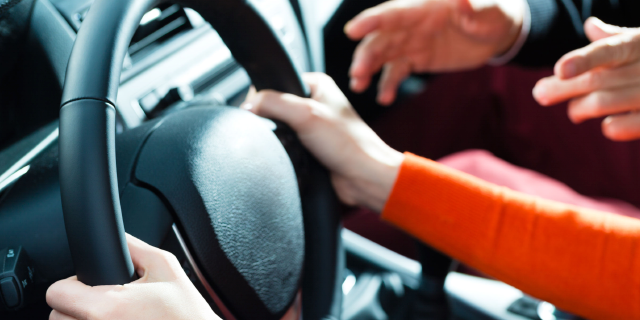In April 2017, the Government announced that there would be four changes to the practical driving test coming into force on 4th December – the first major change to the test since the inclusion of the independent driving section in 2010.
It’s the biggest shake up that the test has seen in over twenty years, with the introduction of the theory test in 1996 being the last time it was revamped this drastically.
Here’s everything you need to know about the new and improved practical driving test.
Why are the changes happening?
The Driver and Vehicle Standards Agency (DVSA) are making the changes to try and ensure newly qualified drivers have the skills necessary to drive safely and confidently in real-life scenarios.
More than a quarter of deaths in teenagers aged between 15 and 19 are a result of collisions on the road, a number the DVSA wants to reduce.
Gareth Llewellyn, DVSA Chief Executive, said, “DVSA’s priority is to help you through a life time of safe driving.
“Making sure the driving test better assesses a driver’s ability to drive safely and independently is part of our strategy to help you stay safe on Britain’s roads.
“It’s vital that the driving test keeps up to date with new vehicle technology and the areas where new drivers face the greatest risk once they’ve passed their test.”

What exactly is changing?
From 4th December 2017, the independent driving part of the test will last twenty minutes, double the time it currently takes.
That means twenty minutes of driving without instruction from the examiner, instead you’ll be asked to follow either traffic signs, as is currently the case, or directions from a sat nav (another change to the test).
Most people will be asked to follow a sat nav as the DVSA have said that only one in every five tests will use road signs for the independent driving section, in order to reflect the ever-increasing use of technology as a means of navigation.
You don’t have to worry about getting hold of a sat nav if you don’t have one – the examiner will provide a TomTom Start 52 which they’ll set up for you.
Many will be happy to hear that the reversing manoeuvres are also changing, meaning that you’ll no longer be asked to ‘reverse around a corner’ or ‘turn in the road’.
Instead, you’ll have to complete one of the following manoeuvres:
• Bay park – the instructor will decide whether you reverse in and drive out, or drive in and reverse out
• Parallel park
• Pull up on the right-hand side of the road, reverse for two car lengths and re-join the traffic
The final addition to the test will be the examiner asking two questions about vehicle safety, known as the ‘show me, tell me’ questions.
As the name suggests, you’ll be asked first to explain how to complete a safety task and later, while you’re driving, to show how you would carry one out.
For example, you could be asked to explain how to check the brakes are working and then to show your examiner how to demist the front windscreen.

So, to recap, the four changes being introduced are:
1) Independent driving will increase to twenty minutes
2) You may be asked to follow directions from a sat nav
3) Different manoeuvres
4) Vehicle safety questions
For full details about the new practical driving test, go to https://www.gov.uk/government/news/driving-test-changes-4-december-2017.
What’s remaining the same?
This may be the biggest update there’s been to the driving test in years but there are still a lot of things that aren’t going to change.
The test will last around forty minutes, as it does now, so the independent driving section will now take up half of it.
Examiners will be looking for the same driving mistakes and marking in the same way, meaning that you’ll still need to achieve less than 16 minors and no majors to pass.
The price will remain the same, costing £62 on weekdays and £75 on weekends, evenings and bank holidays.
Who will be affected?
Every test that is taken from 4th December onwards will follow the new structure, regardless of when it was booked.
If you have previously taken your test and failed, then rebooked with your new test date on or after 4th December, or if your test is moved for any reason, you will have to take the new style test.
If your test is before 4th December, you don’t have to worry about the changes affecting you.
So, whether you’re looking to take your test soon and thinking about what comes next, or if you want to get some more practice in and need learner driver insurance, you can compare insurance quotes online or over the phone with mustard.co.uk.








